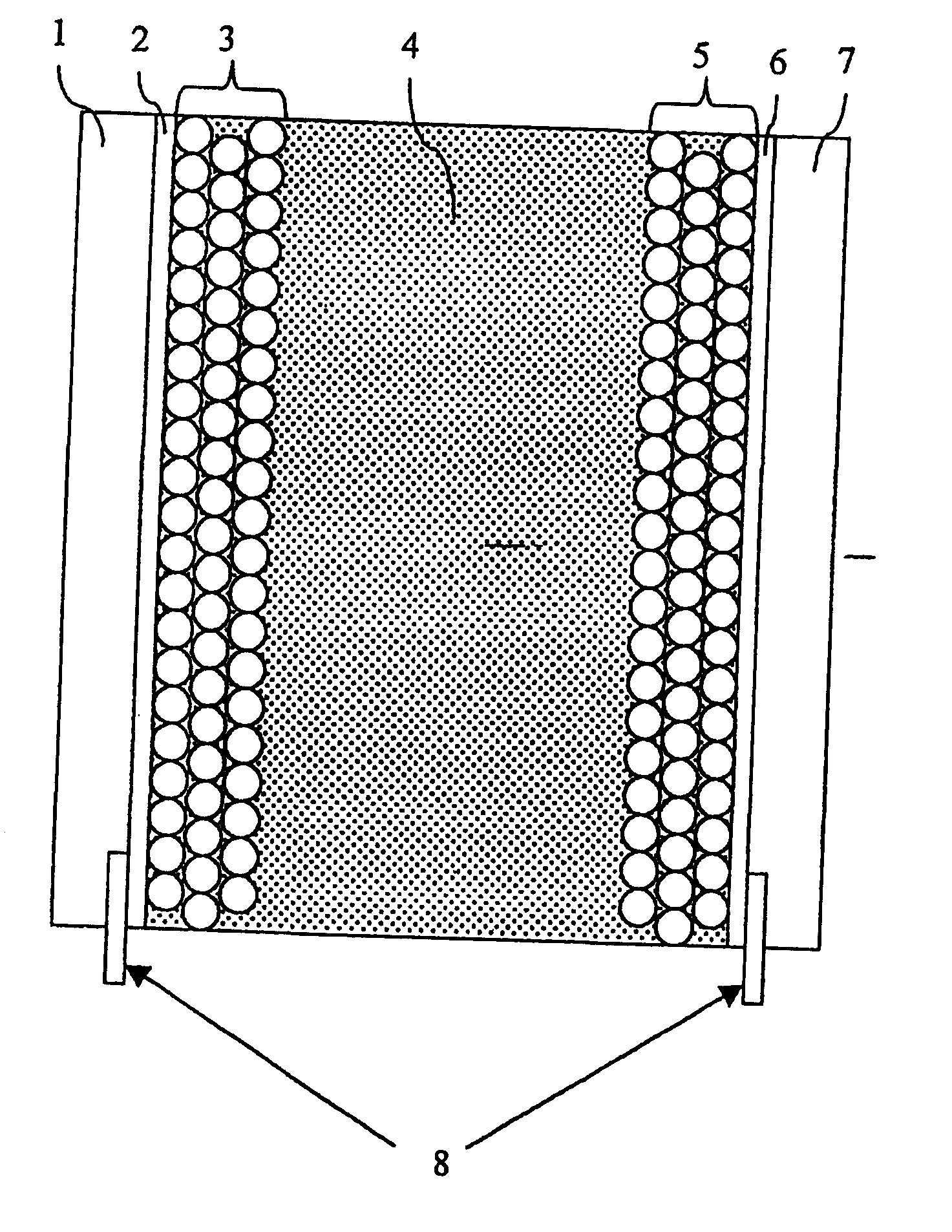Electrochromic device based on nanocrystalline materials
a nano-crystalline material and electrochromophore technology, applied in semiconductor devices, instruments, optics, etc., can solve the problems of inability to classify the electrochromophore as n, poor long-term stability, spontaneous bleaching, etc., to improve stability, improve memory effect, and rapid colour change
- Summary
- Abstract
- Description
- Claims
- Application Information
AI Technical Summary
Benefits of technology
Problems solved by technology
Method used
Image
Examples
specific example
[0047] An electrochromic display according to the invention may be provided as described in detail below.
[0048] Bis-(2-phosphonoethyl)-4,4′-bipyridinium dichloride is adsorbed to the surface of a 4 m thick nanostructured film of TiO2 on a conducting glass plate (0.5 μm fluorine-doped SnO2 on 2 mm glass). This electrode is transparent, but colours blue upon reduction. A nanostructured carbon film (10-50 μm thick), comprising carbon black and graphite particles, is deposited on a second conducting plate. On top of this film a porous white light-scattering film is deposited as a reflector. The two plates are assembled face-to-face using a hot-melting plastic at the uncovered edges of the two plates. Electrolyte (0.2 M tetrabutylammonium trifluoromethanesulfonate in 3-methoxypropionitrile) is introduced in the space between the two electrodes. The resulting electrochromic display has a good memory effect and stability (>100,000 cycles without severe degradation).
[0049] Above a number ...
PUM
| Property | Measurement | Unit |
|---|---|---|
| particle size | aaaaa | aaaaa |
| porosity | aaaaa | aaaaa |
| thickness | aaaaa | aaaaa |
Abstract
Description
Claims
Application Information
 Login to View More
Login to View More - R&D
- Intellectual Property
- Life Sciences
- Materials
- Tech Scout
- Unparalleled Data Quality
- Higher Quality Content
- 60% Fewer Hallucinations
Browse by: Latest US Patents, China's latest patents, Technical Efficacy Thesaurus, Application Domain, Technology Topic, Popular Technical Reports.
© 2025 PatSnap. All rights reserved.Legal|Privacy policy|Modern Slavery Act Transparency Statement|Sitemap|About US| Contact US: help@patsnap.com


